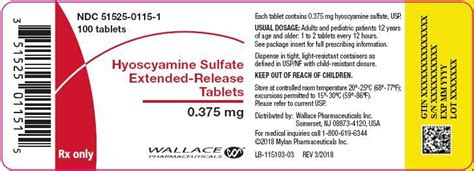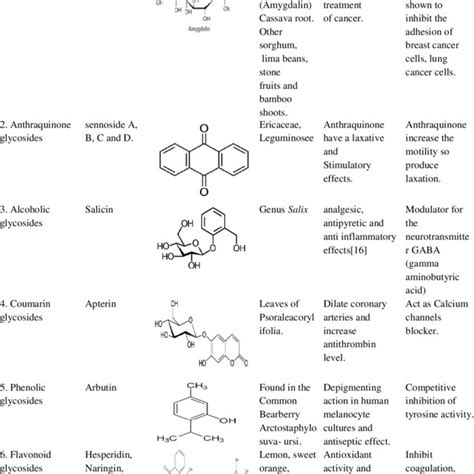Intro
Discover Hyoscyamine uses and benefits, including treating digestive issues, muscle spasms, and respiratory problems, with its anticholinergic and antispasmodic properties, offering relief for irritable bowel syndrome, asthma, and more.
The world of medicine is vast and intricate, with numerous substances playing critical roles in treating various health conditions. One such substance is hyoscyamine, a tropane alkaloid found in certain plants, most notably in the nightshade family. Hyoscyamine has been used for centuries in traditional medicine, and its applications continue to evolve with modern medical research. Understanding the uses and benefits of hyoscyamine can provide insights into its potential as a therapeutic agent.
Hyoscyamine's history of use dates back to ancient civilizations, where it was utilized for its medicinal properties. The substance is extracted from plants such as henbane (Hyoscyamus niger) and deadly nightshade (Atropa belladonna), among others. Its pharmacological effects are diverse, ranging from anticholinergic properties to anti-inflammatory actions, making it a compound of interest for treating a variety of health issues.
The mechanism of action of hyoscyamine involves the inhibition of the acetylcholine receptor, which plays a key role in the parasympathetic nervous system. By blocking these receptors, hyoscyamine can reduce spasms of smooth muscles, decrease secretions, and affect heart rate, among other effects. This anticholinergic action is the basis for its application in treating gastrointestinal disorders, respiratory issues, and other conditions where muscle spasms or excessive secretions are problematic.
Medical Applications of Hyoscyamine

Hyoscyamine's medical applications are broad, reflecting its ability to address a range of symptoms and conditions. It is commonly used to treat gastrointestinal disorders such as irritable bowel syndrome (IBS), where its antispasmodic properties can help alleviate abdominal pain and discomfort associated with bowel movements. Additionally, hyoscyamine is used in the management of peptic ulcer disease, as it can reduce stomach acid production and alleviate symptoms such as nausea and vomiting.
In respiratory medicine, hyoscyamine can be used to treat conditions like asthma and chronic obstructive pulmonary disease (COPD), where its bronchodilatory effects can improve breathing and reduce wheezing. Its application in ophthalmology is also notable, as hyoscyamine can be used to dilate pupils for diagnostic purposes, thanks to its ability to relax the muscles of the iris.
Benefits for Gastrointestinal Health
The benefits of hyoscyamine for gastrointestinal health are particularly significant. By reducing muscle spasms and secretions in the digestive tract, hyoscyamine can provide relief from symptoms of IBS, such as bloating, abdominal pain, and changes in bowel habits. Its anti-inflammatory properties may also contribute to healing and reducing inflammation in the gastrointestinal tract, which can be beneficial in conditions like inflammatory bowel disease (IBD).Moreover, hyoscyamine's ability to reduce stomach acid production makes it a useful agent in the treatment of peptic ulcers and gastroesophageal reflux disease (GERD). By alleviating symptoms such as heartburn and regurgitation, hyoscyamine can improve the quality of life for individuals suffering from these conditions.
Pharmacological Effects and Mechanisms

The pharmacological effects of hyoscyamine are primarily attributed to its anticholinergic activity. By inhibiting the action of acetylcholine at muscarinic receptors, hyoscyamine can induce a range of effects, including:
- Smooth muscle relaxation: Leading to reduced spasms in the gastrointestinal tract, respiratory system, and other areas.
- Decreased secretions: Resulting in reduced production of saliva, sweat, and digestive enzymes.
- Increased heart rate: Through its effect on the sinoatrial node, hyoscyamine can cause tachycardia.
- Pupil dilation: By relaxing the muscles of the iris, hyoscyamine can cause mydriasis.
These effects are dose-dependent and can vary among individuals, highlighting the importance of careful dosing and monitoring when using hyoscyamine therapeutically.
Safety and Side Effects
While hyoscyamine can be an effective therapeutic agent, its use is not without potential side effects and risks. Common side effects include dry mouth, blurred vision, constipation, and urinary retention, reflecting its anticholinergic activity. In higher doses, hyoscyamine can cause more severe effects, including delirium, hallucinations, and tachycardia, necessitating careful management and monitoring.It is also important to consider interactions with other medications, as hyoscyamine can potentiate the effects of other anticholinergic drugs, leading to increased risk of side effects. Pregnant or breastfeeding women should use hyoscyamine with caution, as its effects on the fetus or baby are not fully understood.
Future Perspectives and Research

Despite its long history of use, hyoscyamine remains a subject of interest for modern medical research. Studies are ongoing to explore its potential in treating new conditions, such as overactive bladder and certain neurological disorders, where its anticholinergic properties may offer therapeutic benefits.
Moreover, the development of new formulations and delivery systems for hyoscyamine could improve its efficacy and reduce side effects, making it a more attractive option for patients. The synthesis of derivatives with enhanced specificity and potency is another area of research, aiming to create more targeted therapies with fewer adverse effects.
Conclusion and Recommendations
In conclusion, hyoscyamine is a versatile compound with a range of medical applications, from gastrointestinal disorders to respiratory and ophthalmological conditions. Its anticholinergic effects make it a valuable therapeutic agent, but its use requires careful consideration of potential side effects and interactions.For individuals considering hyoscyamine as a treatment option, it is essential to consult with a healthcare provider to discuss the benefits and risks and to determine the most appropriate dosage and treatment plan. Further research into the properties and applications of hyoscyamine will likely uncover new uses and improve its therapeutic profile, making it an exciting area of ongoing medical investigation.
What are the common uses of hyoscyamine?
+Hyoscyamine is commonly used to treat gastrointestinal disorders such as irritable bowel syndrome (IBS), peptic ulcer disease, and respiratory conditions like asthma and chronic obstructive pulmonary disease (COPD).
How does hyoscyamine work?
+Hyoscyamine works by inhibiting the acetylcholine receptor, leading to anticholinergic effects such as smooth muscle relaxation, decreased secretions, and increased heart rate.
What are the potential side effects of hyoscyamine?
+Common side effects of hyoscyamine include dry mouth, blurred vision, constipation, and urinary retention. In higher doses, it can cause more severe effects such as delirium, hallucinations, and tachycardia.
We invite readers to share their experiences or ask questions about hyoscyamine in the comments section below. For those interested in learning more about the therapeutic applications of hyoscyamine or other medicinal compounds, we recommend exploring reputable medical resources and consulting with healthcare professionals. By engaging in informed discussions and staying updated on the latest research, we can work together to advance our understanding of these valuable substances and their potential to improve human health.
